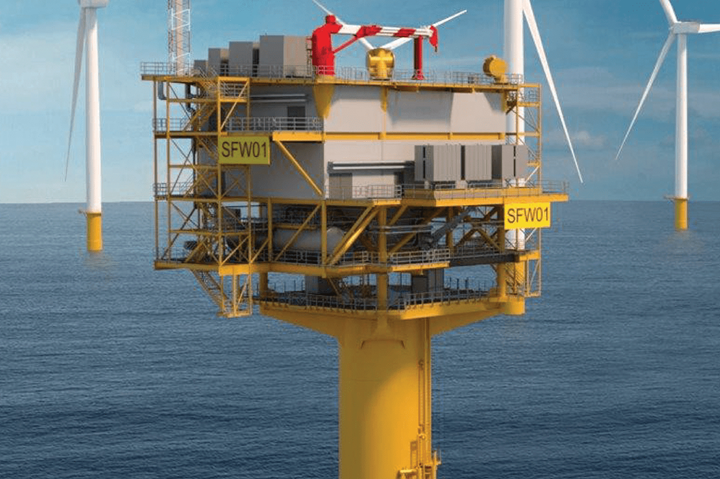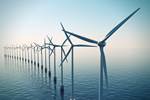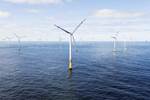Second U.S. offshore wind project gains approval to begin construction
Developers have establishd a domestic supply chain for critical components to make the 132-MW project located off of Long Island, New York a reality.

A rendering of the U.S.-built offshore wind substation, which will be deployed at South Fork Wind. Photo Credit: South Fork Wind
On Jan. 19 the U.S. Department of the Interior’s Bureau of Ocean Energy Management (BOEM) gave to the South Fork wind project — New York’s first offshore wind farm — making it the second U.S. offshore wind project authorized to begin construction. Onshore construction of the 132-megawatt (MW) project is expected to begin soon after federal approval and, when completed in 2023, the one dozen turbine project located 35 miles from Long Island, N.Y., U.S. will reportedly generate enough power for 70,000 homes. Today’s construction approval follows Vineyard Wind’s approval in late 2021 and continues the moment of offshore wind power adoption in the U.S.
Even before approval was finalized, South Fork project developers (Fredericia, Denmark) and (Boston, Mass., U.S.) announced that many critical components of the wind farm will be constructed domestically, including at a South Carolina facility, an in Texas and a large at shipyards in Louisiana, Mississippi and Florida. Supply chains for each component will stretch into other states, as with the offshore substation, which is expected to be partially built in Kansas. As of last week, project developers announced an agreement with Long Island’s Haugland Energy Group (Melville, N.Y., U.S.) to install part of the that will create more than 100 skilled jobs.
South Fork will install 12 SG 11.0-200 DD 11-megawatt turbine supplied by Siemens Gamesa (Zamudio, Vizcaya, S[ain). These feature 97-meter-long Siemens Gamesa B97 IntegralBlades and a 200-meter diameter rotor.
Ørsted and Eversource expect the 130 MW project to be fully permitted by January 2022, with construction activities starting soon after that and the project planned to be completed and put into operation by the end of 2023.
“The U.S. now has multiple offshore wind projects in their construction phases, showcasing that a domestic industry is now coming to life. Offshore wind is a powerful and reliable renewable energy source; its development is essential to confronting climate change and meeting state and federal clean energy goals. Today’s federal approval of South Fork — the second U.S. offshore wind project — further solidifies the U.S. as a major market and will boost needed supply chain investments,” says Ross Gould, vice president of supply chain development at the (Baltimore, Md., U.S.). “While local labor will be instrumental in construction and operations, the South Fork project shows how a singular offshore wind project creates hundreds of well-paying jobs across the nation as manufacturing and logistics supply chains stretch deep into the U.S. This localization of a supply chain is critical and must be better supported by policymakers to ensure projects move forward consistently and economic benefits are captured domestically.”
Related Content
-
Natilus announces Horizon blended wing body CFRP aircraft for 200-passenger narrowbody market
Following its Kona cargo aircraft with 460 pre-orders, this larger all-CFRP model responds to airlines’ request to fill Boeing and Airbus gap with 25% less weight, 40% greater capacity and 50% less carbon emissions, to enter service by early 2030s.
-
NCC receives investment to support next-gen composite wing
The NCC was awarded a £15.8 million U.K. government grant for HRMCap to de-risk, accelerate innovation in high-rate large aerocomposites structure manufacturing.
-
Rocket Lab begins installation of large AFP machine for rocket production
The 99-ton AFP machine, custom-designed and built by Electroimpact, is claimed to be the largest of its kind, expecting to save around 150,000 manufacturing hours in the Neutron rocket’s production process.






